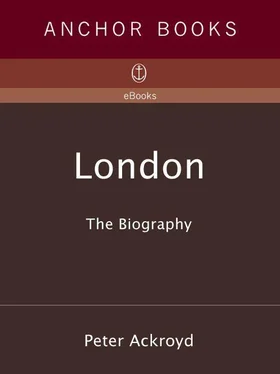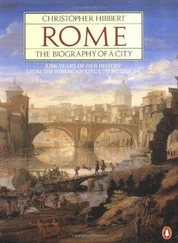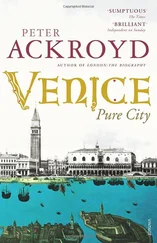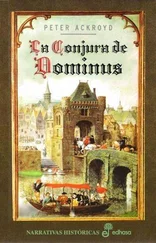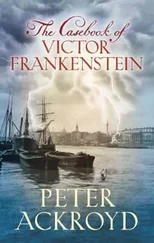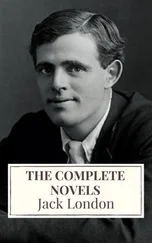Peter Ackroyd - London - The Biography
Здесь есть возможность читать онлайн «Peter Ackroyd - London - The Biography» весь текст электронной книги совершенно бесплатно (целиком полную версию без сокращений). В некоторых случаях можно слушать аудио, скачать через торрент в формате fb2 и присутствует краткое содержание. Год выпуска: 2000, ISBN: 2000, Жанр: Биографии и Мемуары, на английском языке. Описание произведения, (предисловие) а так же отзывы посетителей доступны на портале библиотеки ЛибКат.
- Название:London: The Biography
- Автор:
- Жанр:
- Год:2000
- ISBN:9781400075515
- Рейтинг книги:5 / 5. Голосов: 1
-
Избранное:Добавить в избранное
- Отзывы:
-
Ваша оценка:
- 100
- 1
- 2
- 3
- 4
- 5
London: The Biography: краткое содержание, описание и аннотация
Предлагаем к чтению аннотацию, описание, краткое содержание или предисловие (зависит от того, что написал сам автор книги «London: The Biography»). Если вы не нашли необходимую информацию о книге — напишите в комментариях, мы постараемся отыскать её.
London: The Biography — читать онлайн бесплатно полную книгу (весь текст) целиком
Ниже представлен текст книги, разбитый по страницам. Система сохранения места последней прочитанной страницы, позволяет с удобством читать онлайн бесплатно книгу «London: The Biography», без необходимости каждый раз заново искать на чём Вы остановились. Поставьте закладку, и сможете в любой момент перейти на страницу, на которой закончили чтение.
Интервал:
Закладка:
What, then, was the nature and activity of the citizens themselves in the last decades of Roman London? They would be largely of Romano-British descent, and there were occasions when they were ruled by a British “king.” But London has from its inception always been a mixed city, and the streets would have been filled with the inhabitants of many nations including the native Celtic tribes who, over three hundred years, had naturally grown accustomed to the new order. This Roman city spanned a period as long as that from the late Tudors to the present day, but we have in general only the silent evidence of scattered cups and dice, bath scrapers and bells, writing tablets and millstones, brooches and sandals. How can we make these objects live again?
There were of course, in the passages of this long history, periods of turbulence and warfare. Many have gone unrecorded, but one or two powerful incidents survive. The darkness breaks and a scene presents itself, frozen for a moment, throwing into further confusion and mystery the historical process of which it is a part. A Roman leader named Allectus sailed to Britain in order to put down a local rebellion; having defeated the rebels he set up his headquarters in London. A Celtic chieftain, Asclepiodotus, in turn marched against the imperial victor; outside the city there was a great battle in which the British were successful. The remaining Roman troops, fearing massacre, fled within the walls and closed the gates. Siege engines were brought, and a breach was made in the defences; the Celts poured in and the leader of the last legion begged for mercy. It was agreed that the Romans could withdraw and take to their ships but one tribe or group of tribesmen reneged on the agreement: they fell upon the Roman soldiers, decapitated them in ritual Celtic style and, according to the narrative of Geoffrey of Monmouth, threw their heads into “a brook in the city … in Saxon, Galobroc.” Many skulls were, in the 1860s, found in the bed of the long-buried Walbrook River. The rest is silence.
But we cannot from the evidence of this single anecdote assume that the history of London is one of warring tribes against a common Roman enemy. All the evidence suggests otherwise and instead intimates a degree of mingling, maintained by mutual trade, that encouraged an almost unbroken continuity of commerce and administration. There would by now be something of a London type, perhaps with that particular “muddy” complexion which became characteristic in later years. No doubt the citizens spoke a Latin patois which included native elements, and their religious beliefs would have been equally mixed and idiosyncratic. The Mithraic temple is only one example of a mystery religion-predominantly the reserve of merchants and professional administrators-but the Christian faith was not unknown. In AD 313 a certain Restitus attended the Council of Arles in his capacity as Bishop of London.
The city’s economic activity was equally mixed and practical; the commercial and military quarters were still in active operation, but the archaeological evidence suggests that many public buildings were allowed to fall into disuse and earth was laid over once inhabited sites for the purposes of farming. It may seem odd to have farms and vineyards within the walls of the city but, even as late as the time of Henry II, half of London was open ground with fields, orchards and gardens adorning it. There is also evidence, in the third and fourth centuries, of quite large stone buildings which were conceivably farm-houses. We might then have the paradox of rural landowners within the city itself. Certainly the city was still formidable enough to withstand the attentions of marauding tribes; in AD 368 the Attacotti laid waste to much of Kent without daring to make an onslaught upon London itself.
But in 410 Rome withdrew its protecting hand; like the hand found beneath Thames Street, it was of bronze rather than of gold. There are reports of raids against the city by Angles and Saxons, but there is no record of any great collapse or transition. There is, however, some evidence of decay. There was once a bath-house in Lower Thames Street which, in the early fifth century, was abandoned. The glass was shattered, and the wind destroyed the roof; then at a later date, after the collapse of the roof, the walls of the eastern range of buildings were systematically demolished. Found among the debris was a Saxon brooch, dropped by a woman while clambering over these alien ruins.
The arrival of the Saxons has been dated to the beginning of the fifth century when, according to the historian Gildas, the land of Britain was licked by a “red and savage tongue.” Within certain cities “in the midst of the streets lay the tops of lofty towers, tumbled to the ground, stones of high walls, holy altars, fragments of human bodies.” But in fact the Angles and the Saxons were already living in the London region, and it is clear from the archaeological evidence that by the late fourth century troops of Germanic origin were guarding London as legionnaires under the imperial banner.
It was once assumed, however, that the arrival of the Saxons resulted in the destruction and desertion of the city itself. In fact there was no fiery carnage in the London area from which Rome retreated. On several sites has been found a layer of “dark earth” which was believed to indicate dereliction and decay, but contemporary experts have suggested that levels of dark soil may point to occupation rather than destruction. There is other evidence of the continuous habitation of London during that period once known as the “dark ages.” In one of those extraordinary instances of historical survival, it has been shown that the provisions of London law in the Roman period- particularly in terms of testamentary provisions and property rights-were still being applied throughout the medieval period. There was, in other words, a continuous administrative tradition which no Saxon occupation had interrupted.
The old chronicles assert that London remained the principal city and stronghold of the Britons. In the histories of Nennius and Gildas, Geoffrey of Monmouth and Bede, it is regularly cited as an independent town which is also the home of the British kings; it is the place where sovereigns were made and acclaimed, and it is the site where the citizens were called together in public assembly. It is also the chief place of defence when, on various occasions, the Britons fled within the safety of the walls. It is the seat of the British and Roman nobility, as well as representing one of the great sees of the Christian realm. The ancient British kings-Vortigern, Vortimer and Uther among them-are depicted as reigning and living in London.
Yet in these early chronicles the distance between factual interpretation and fanciful reconstruction is short. In these accounts, for example, Merlin makes many prophecies concerning the future of the city. Another great figure who exists somewhere within the interstices of myth and history is also to be found in London: King Arthur. According to Matthew of Westminster, Arthur was crowned by the archbishop of London. Layamon adds that he entered London after his investiture. The mark of this urban civilisation was its sophistication; Geoffrey of Monmouth, for example, celebrates the affluence and courtesy of Arthur’s subjects as well as the “richness” of decorative art everywhere apparent. In Malory’s great prose epic, derived from several original sources, known as Le Morte d’Arthur , there are many references to London as the principal city of the realm. At a time of foreboding after the death of Uther Pendragon, “Merlyn wente to the Archebisshop of Caunterbury and counceilled hym for to sende for all the lordes of the reame and alle the gentilmen of armes that they shold to London come” and gather “in the grettest chirch of London-whether it were Powlis or not the Frensshe booke maketh no mencyon.” In later books the Feir Maiden of Astolat is laid beside the Thames, Sir Launcelot rides from Westminster to Lambeth across the same river, and Guenevere “cam to London” and “toke the Towre of London.”
Читать дальшеИнтервал:
Закладка:
Похожие книги на «London: The Biography»
Представляем Вашему вниманию похожие книги на «London: The Biography» списком для выбора. Мы отобрали схожую по названию и смыслу литературу в надежде предоставить читателям больше вариантов отыскать новые, интересные, ещё непрочитанные произведения.
Обсуждение, отзывы о книге «London: The Biography» и просто собственные мнения читателей. Оставьте ваши комментарии, напишите, что Вы думаете о произведении, его смысле или главных героях. Укажите что конкретно понравилось, а что нет, и почему Вы так считаете.
